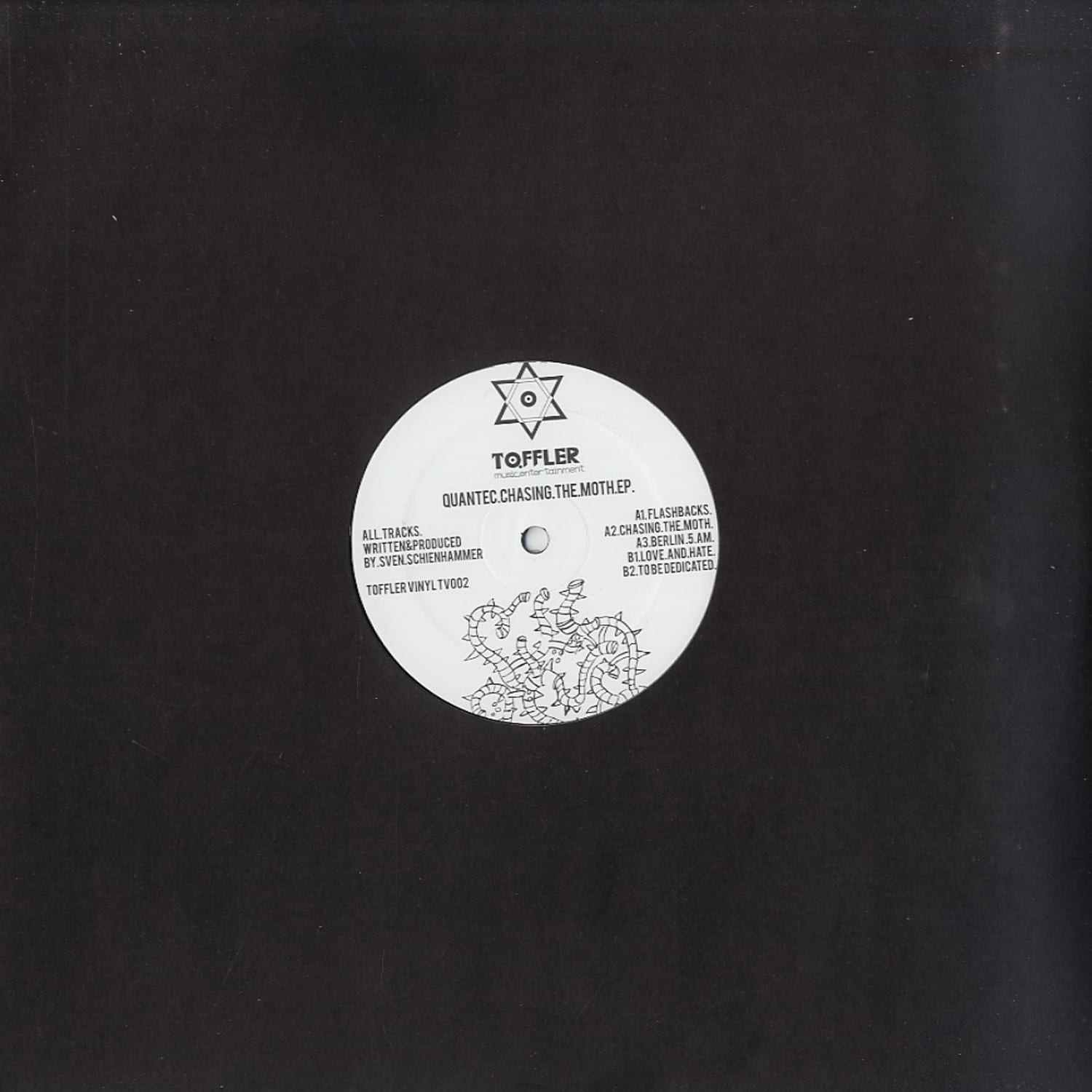Quantec
CHASING THE MOTH EP
12 Inch

Limited edition vinyl only release of this deep and dubby moth-chasing journey by Quantec. Full support from Q-Burns, Abstract Message, Paco Osuna, Davide Squillace, Claudio PRC, Luciano Esse, Superferric, Lula Circus, Paolo Belli, Marc Raum, Nexus DJ & Mon, Ed Coogan, Ivan Komlinovic, Javi Bora, Nils Nuernberg, Angel Molina, Ory J (Sailor Mood) ...
Moths are not easily differentiated from butterflies. Sometimes the name 'Heterocera' is used for moths while the term 'Rhopalocera' is used for butterflies to formalize the popular distinction; these, however, have no taxonomic validity. Many attempts have been made to subdivide the Lepidoptera into groups such as the Microlepidoptera and Macrolepidoptera, Frenatae and Jugatae, or Monotrysia and Ditrysia. Failure of these names to persist in modern classifications is because none of them represents a pair of 'monophyletic groups'. The reality is that butterflies are a small group that arose from within the 'moths' (being considered as part of Ditrysia of the Neolepidoptera).[2] There is thus no way to group all of the remaining taxa in a monophyletic group, as it will always exclude that one descendant lineage.
The Modern English word 'moth' comes from Old English 'motte' (cf. Northumbrian 'mohoe') from Common Germanic (compare Old Norse 'motti', Dutch 'Mot' and German 'Motte' all meaning 'moth'). Perhaps its origins are related to the Old English 'maoa' meaning 'maggot' or from the root of 'midge' which until the 16th century was used mostly to indicate the larva, usually in reference to devouring clothes.
The study of butterflies and moths is known as lepidoptery, and biologists that specialize in either are called lepidopterists. As a pastime, watching butterflies and moths is known as butterflying and mothing. The latter has given rise to the term 'mother' for someone who engages in this activity - sometimes written with a hyphen (moth-er) to distinguish it from its usual meaning.[citation needed] This confusion does not arise in speech as it is pronounced differently.
Moth larvae, or caterpillars, make cocoons. When it comes out of the cocoon, it is a fully grown moth with wings. Some moth caterpillars dig holes in the ground, and they will live in the hole until they are ready to turn into a fully grown moth.[3][tv002_info from tv]